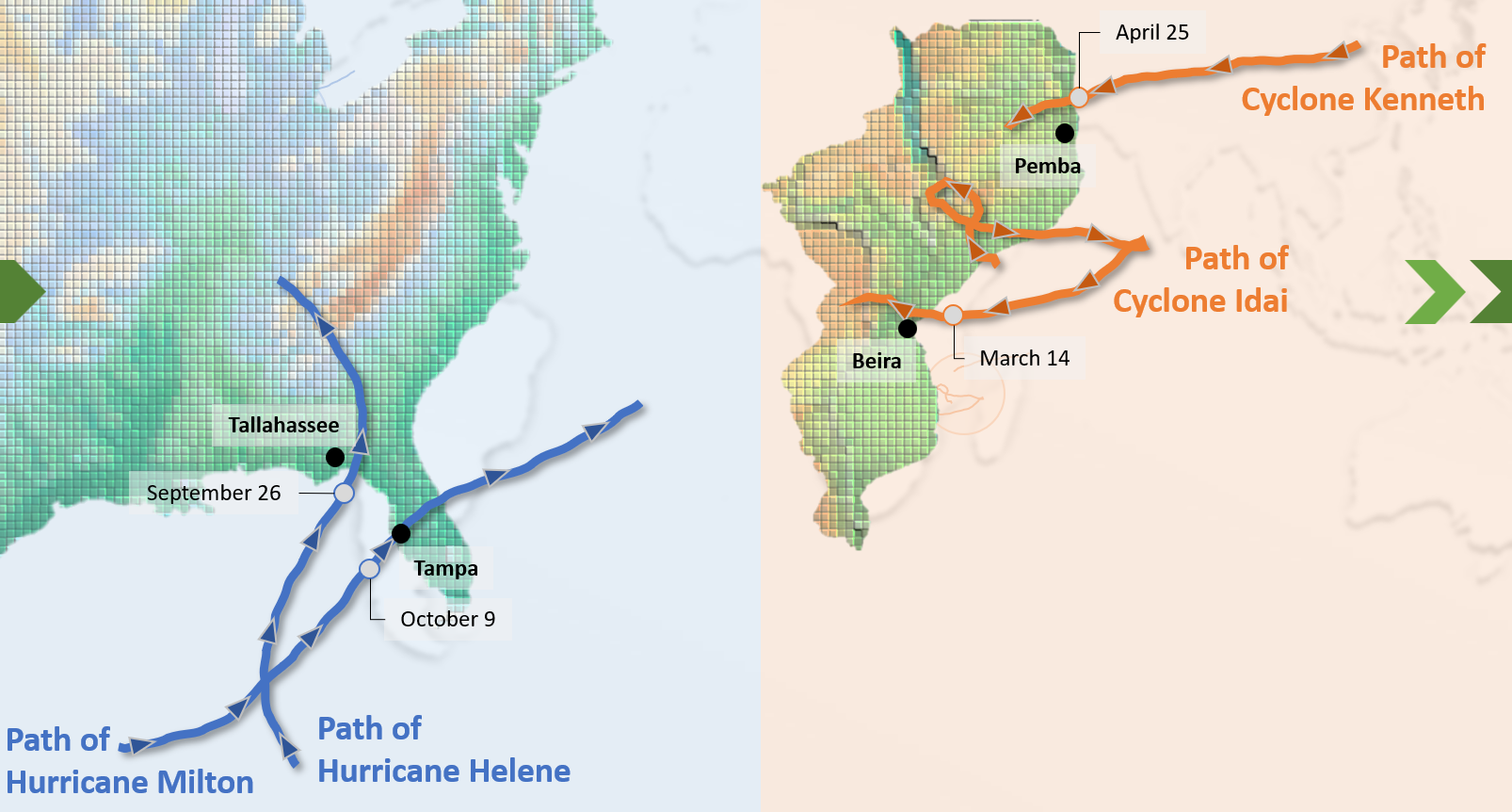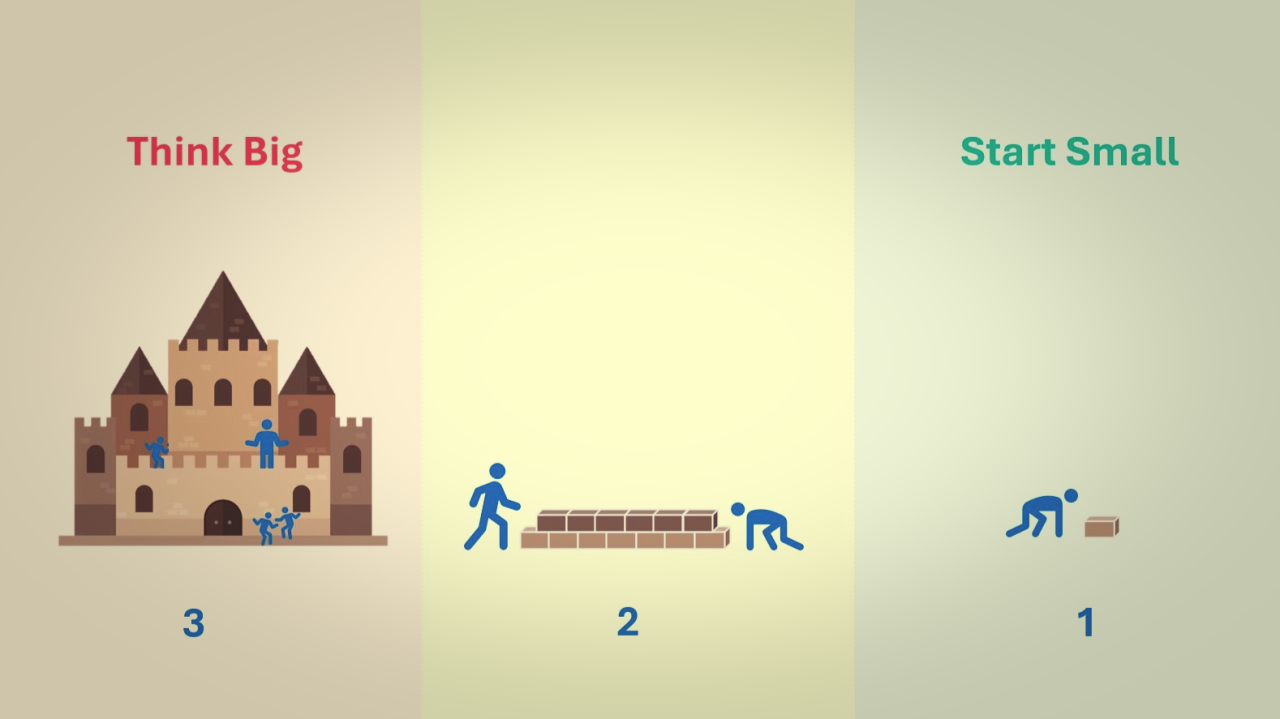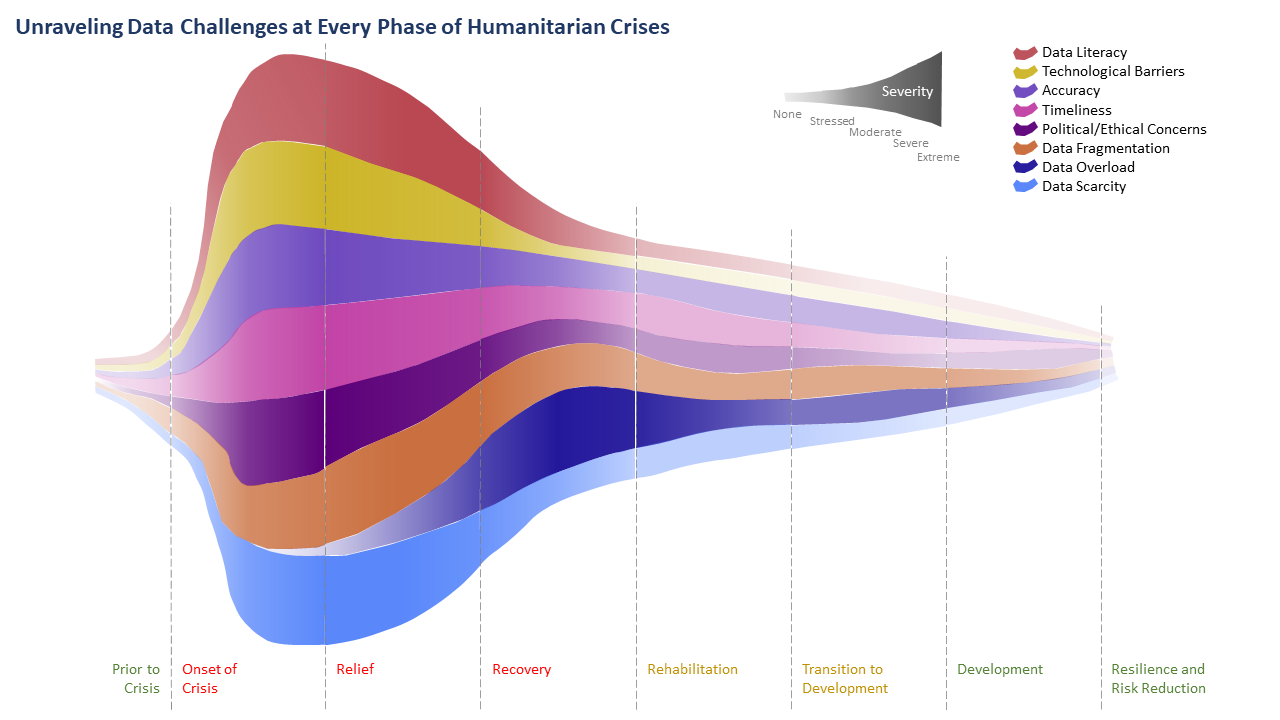In 2019, Cyclones Idai and Kenneth struck Mozambique, creating one of the worst humanitarian crises the region had ever seen. These back-to-back storms displaced millions, took over 1,600 lives, and left vast areas in need of immediate assistance. Meanwhile, in the US, Hurricanes Helene and Milton caused significant damage, though the country’s centralized disaster response infrastructure is allowing for a more controlled and organized recovery.
The responses to these crises highlight a key difference: while the US manages disaster relief internally, countries like Mozambique rely heavily on international assistance. This reliance, while necessary, introduces greater complexity to the coordination of relief efforts. The paradox is that international aid, though critical, often results in scattered data, undermining the efficiency of humanitarian responses and leaving critical gaps in relief efforts.

When disaster strikes in countries like the USA, response coordination tends to be far more streamlined. Agencies such as FEMA (Federal Emergency Management Agency) operate with a centralized authority, ensuring that all involved organizations – from federal, state, and local levels – are working with a shared set of data. This centralized structure minimizes the risk of data fragmentation by enforcing standardized protocols for data collection, sharing, and analysis.
On the other hand, in countries like Mozambique, disaster response often relies heavily on international assistance. While there are mechanisms and systems in place specifically designed to coordinate relief efforts, the real challenge lies in their effectiveness and efficiency. When numerous international and national organizations enter the field – each with its own data systems, tools, and methodologies – these coordination mechanisms often struggle to manage the overwhelming flow of information. This can result in data fragmentation, where critical information becomes scattered across different platforms, formats, and systems, leading to inefficiencies and gaps in the response.
In essence, while international assistance is vital for less-developed countries, the involvement of numerous players often complicates coordination, creating a landscape where data silos are inevitable. This challenge of fragmented information continues to hinder effective, timely humanitarian responses.

In large-scale disasters like Cyclones Idai and Kenneth, the scale and duration of the crises draw in numerous organizations, each playing a vital role. However, as more groups become involved, coordinating relief efforts becomes increasingly difficult. Each organization brings its own systems and methods, leading to data silos where information is scattered across platforms and not shared efficiently.
This data fragmentation results in:
- Delays in Decision-Making: Critical decisions are slowed due to incomplete or unshared data.
- Duplication of Efforts: Multiple organizations may unknowingly cover the same ground, while other areas remain underserved.
- Information Gaps: Key data on vulnerable populations or resources may be missed entirely.
While international assistance is essential, the lack of effective data coordination often complicates the response, creating inefficiencies that hinder timely, coordinated relief.
Data fragmentation remains a major challenge in humanitarian responses, largely due to several key causes:
- Lack of Standardization: Different formats and methodologies make it hard to integrate data across organizations, leading to fragmented datasets.
- Siloed Data Systems: Data is often kept within isolated systems, making it inaccessible to other organizations during crises.
- Limited Coordination: The absence of a centralized authority to manage data sharing leads to inefficiencies in communication between organizations.
- Data Ownership Concerns: Privacy, ethical, and competitive reasons often prevent organizations from sharing critical data.
- Technological Barriers: Many regions lack the infrastructure to support real-time data sharing, further limiting coordination efforts.
Addressing these root causes is critical to overcoming data fragmentation and ensuring more effective, coordinated humanitarian responses.
The issue of data fragmentation in humanitarian response remains a significant challenge, but solutions exist – and often, they come from the collective wisdom and experience of those in the field. So, I invite you to join the conversation and share your insights.
How can we promote better data coordination during crises? What strategies can ensure that organizations work with a unified dataset to avoid silos and duplications? Is it about establishing stronger central authorities, or could there be other models that promote real-time data sharing?
What technologies or tools could break down silos between humanitarian organizations? How can we use emerging technologies – whether it’s cloud platforms or real-time dashboards – to facilitate better data sharing and coordination?
Excited to hear your thoughts! If you’d like to jump into the discussion or share your insights, just follow this link, and let’s keep the conversation going:
https://www.linkedin.com/pulse/tale-two-four-storms-unraveling-paradox-data-alen-chalak-pmp-3ll7f/?trackingId=HVFkt3HfiOZvQ4%2FB579hNw%3D%3D




